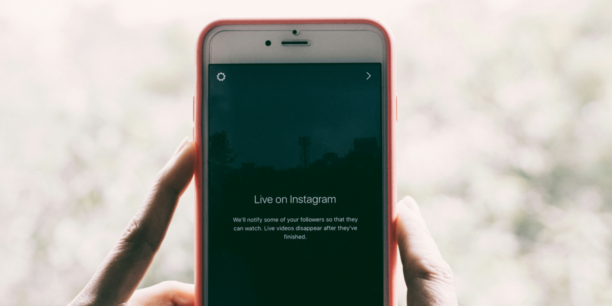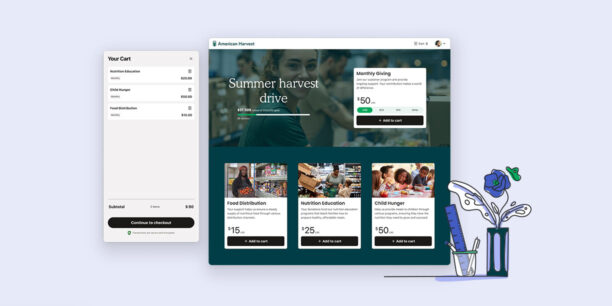Meta Conversions API: Everything Nonprofits Need to Know

This post is written by guest author, Blake Arata. Blake Arata is the Director of Digital at Community Boost Consulting and has helped pioneer many of their digital marketing channels. In 2021, the Community Boost team directly served 300+ nonprofits, drove over 10 million website visitors, and directly generated over $20 million in online donations. Trusted by hundreds of great causes, Community Boost has been committed to helping the social sector scale online revenue and impact since 2012.
Nonprofit organizations leverage Meta and other online platforms to connect with supporters, often using targeted advertising. Whether it be fundraising on Facebook for a cause or finding new volunteers in the area, these efforts are powered by data to provide the most relevant message at the right time to the right audience.
That being said, the digital advertising ecosystem is quickly changing. Online users increased privacy expectations, regulations from governments, and changes coming directly from large tech platforms like Apple, have impacted the way that nonprofit organizations can collect and use data.
For example, one of the biggest changes has been how web browsers have changed their policies around third-party cookie tracking, which has traditionally been the way that most online platforms track users online. It’s expected that by the end of 2023 most browsers will fully block all third-party cookies automatically.
It’s clear that the nonprofit sector must move away from third-party cookie tracking and look to new ways of collecting data while also respecting privacy. Without additional tracking options, nonprofit organizations could experience a drop-off in results from their digital marketing efforts.
These additional forms of tracking need to ensure that:
- You can still reach people who have shown interest in your organization
- Ad targeting is showing to the right audiences
- Ad platforms (that thrive on data) are able to perform to their fullest potential
- Measurement and reporting are accurate
So, what can your organization do about this ever-changing landscape? Thankfully, organizations like Classy, which understand the value of accurate data, are taking steps to build more reliable connections with ad platforms. This first step is a Classy partner integration with a tool called Conversions API, or CAPI for short.
What is Conversions API?
Conversions API is a Meta business tool that creates a direct connection between your marketing data and Meta. This new tool lets organizations share key web and offline events, or customer actions, directly from a server to the Facebook pixel (known as server-side tracking). Server-side tracking allows advertisers to move third-party cookies away from your website or app into server-side processing via the cloud, which improves the performance and measurement of Facebook ad campaigns.
Some of the benefits of CAPI include:
- More Accurate Data: The Conversions API can help you measure ad performance and attribution across a prospective supporter’s full journey, from discovery to conversion. This helps you better understand how digital advertising impacts both online and offline results.
- Improved performance: Because CAPI doesn’t rely solely on 3rd-party cookie tracking (like the Meta pixel), your organization will be able to leverage the full power of Meta’s advertising capabilities. The more data you can feed the ad platform, the faster it will learn, leading to improved results.
- Data Control: Conversions API gives organizations the ability to control what data is shared and when. This means that organizations that store lots of user data can control what is shared with clients to add another layer of security.
How Does Meta’s Conversion API Work?
Take the example of your nonprofit advertising during year-end on Meta. You’re trying to drive as many donations as you can and report back to your team the success of your campaign efforts. If you are unable to record a completed donation or registration event with the Meta pixel because a user has opted out of tracking, the Classy integration works alongside the Meta Conversions API to send a parallel, server-based event to Meta with extra data that can be used to help identify the event. That way you can see exactly how many donations your campaigns truly generated from Meta.
In the instance that a donation or registration occurs and an event is received by Meta from both the Conversions API and the Meta Pixel, Meta will then ‘deduplicate’ one of the events and recognize one event has occurred. Alternatively, if a user has opted out of tracking, then an event will only be sent to Meta through the Conversions API. This means that this method of tracking will help organizations more accurately measure conversions like registrations or donations regardless of whether or not a user has opted out of tracking.
Easily Implement CAPI With Classy
Meta recommends getting started with CAPI in two ways: either directly, by using your own in-house developer resources, or alternatively, by leveraging a partner solution. If you are a nonprofit organization that has an in-house developer or has the bandwidth to set up CAPI on your own, you can find Meta’s guided instructions for the process here.
If you don’t have an in-house developer, but you’re a Classy customer, you’re in luck! Recognizing the need for nonprofits everywhere to be able to easily set up Conversions API, Classy has developed its own server-side event tracking solution that allows partner agencies and Classy customers to retrieve the data needed to optimize their online fundraising strategies. Classy’s solution to the Conversions API is incredibly accessible compared to the many alternatives of setting up CAPI with Meta. Setting up Conversions API with the Meta Pixel can also ensure more accurate data, data control, and accurate data sharing.
Without Classy, one of the larger hurdles for setting up CAPI is implementing and creating your own server-side event solution to send data to Meta. There are also data requirements for what information you need to send Meta in order for the Conversions API to work. Without developers and or the time, this can be a deterring factor for organizations who want to use Meta’s Conversions API.
With Classy, this piece is all handled by Classy’s implementation team. Upon completing the setup of the Meta Conversions API within your Meta Business Suite, you just need to connect your Pixel ID and API Conversions Token to your Classy account. Classy will then send the events and necessary data points that Meta requires in order to properly recognize and deduplicate events.
Safely Track Data With the Classy CAPI Integration
The launch of Conversion API is a massive win for the nonprofit sector. Not only will it help organizations more accurately track results from Meta campaigns, but it will help change the way other platforms like Google, Amazon, and LinkedIn safely track users’ information. As mentioned above, there are a lot of benefits to server-side tracking, and based on current privacy and data trends, we expect to see server-side tracking become a more relied upon solution.
For most organizations, implementing the Meta Conversions API will be the first step toward server-side tracking, but remember you don’t have to go on this journey alone. Make sure you’re taking advantage of this simple-to-use Classy CAPI integration to ensure more accurate data, improved performance, and data control for your nonprofit.
Learn more about Classy’s CAPI Integration.
Subscribe to the Classy Blog
Get the latest fundraising tips, trends, and ideas in your inbox.
Thank you for subscribing
You signed up for emails from Classy
Request a demo
Learn how top nonprofits use Classy to power their fundraising.



